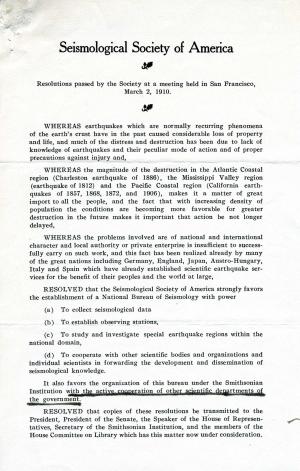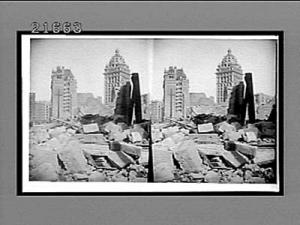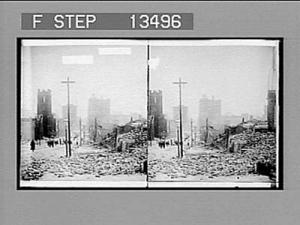
Clough is the third Secretary of the Smithsonian with seismological expertise. The first Secretary, Joseph Henry (1795-1878), a physicist, was very interested in documenting reports of earthquakes and developing measurement tools. After an April 1852 earthquake on the East Coast, Henry sent out a “circular,” asking his meteorological observers to describe its effects on their region.
Charles Doolittle Walcott (1850-1927), the fourth Secretary, was a paleontologist who had directed the US Geological Survey and is best known for discovering the bizarre Burgess Shale deposits in Canada. In 1906, the San Francisco earthquake, one of the worst in history, destroyed the city and took over 3,000 lives, galvanizing the scientific community into action. Walcott was a central figure in an effort to create a Seismological Institute to compile data and ensure long term documentation of these geological events to understand them better – and this effort was to be part of the Smithsonian.
Members of the US Congress knew the country needed to be better prepared for these events and were concerned that earthquake work was carried on by numerous government programs, with little coordination, creating duplicative work that wasted taxpayers’ resources. Walcott proposed that the Smithsonian serve as the central point for earthquake research – compiling scientific data, specimens, images, news reports, etc., in one place, and making these resources readily available to all government agencies involved in responding to earthquakes. This was similar to the role of the Smithsonian’s US National Museum which held the collections amassed by government scientists, so duplicate collections were not created, and made the collections available to all who needed to study them.

In Record Unit 45 - Records of the Office of the Secretary, are four folders documenting the plans for the Seismological Institute. Walcott had the support of the American Philosophical Society, Geological Society of America, National Academy of Sciences, and distinguished scholars, such as Harry F. Reid at The Johns Hopkins University. In 1907, the secretary of the Seismological Society of America, George D. Louderback, wrote to Walcott that the society had approved a proposal to create a Seismological Institute under Smithsonian aegis – with its headquarters in California. In 1910, the Seismological Society of America passed a resolution supporting the creation of a seismological institute which would:
- collect seismological data;
- establish observing stations;
- study special earthquake regions;
- cooperate with organizations and individuals to develop and disseminate seismological knowledge; and
- be placed under the Smithsonian’s aegis because of its tradition of active cooperation with government science units and other scientific organizations.

Initially Walcott worried about funding for the Institute but David Starr Jordan, president of Stanford University, A. C. Lawson of the Carnegie Institution of Washington, and other proponents lobbied the Congress and approached philanthropists for financial support. Walcott coordinated the effort to push for the Institute. Legislation was introduced every year between 1907 and 1913, with some congressional support, but the legislation never made it through to law. The National Weather Service objected, since they wanted to retain their appropriation for collecting seismological data, and the legislation languished in committee through 1913. But then the nation was confronted with an even bigger crisis – one that would take more lives and cause more destruction than the 1906 quake. As World War I broke out in 1914, plans for a new institute were lost amidst the need to prepare for war.
Archives do not just trace past accomplishments, they also show us the roads not taken.
Related Collections
- Record Unit 45 - Office of the Secretary, Records, 1890-1929, Smithsonian Institution Archives
Related Resources
- Joseph Henry and the Origins of American Seismology, O say can you see? blog, NMAH
- The San Francisco Earthquake, 1906, in color, O say can you see? blog, NMAH
- Earthquake Shakes DC, Chronology of Smithsonian History
Produced by the Smithsonian Institution Archives. For copyright questions, please see the Terms of Use.


Leave a Comment